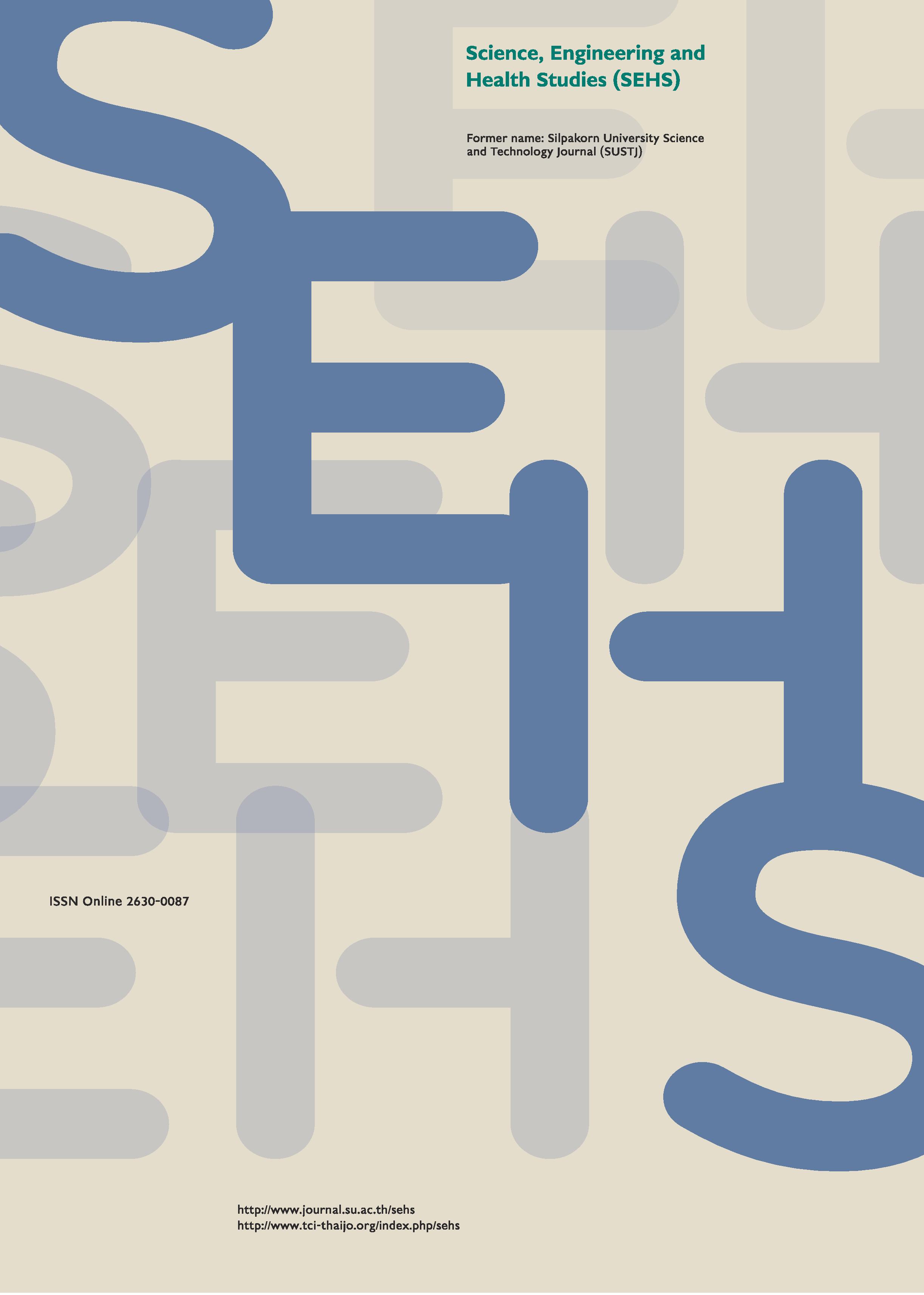Mapping of cloud cover from satellite data over Thailand
Main Article Content
Abstract
In this study, an empirical model for estimating cloud cover from satellite data was developed. The Skyview instruments were installed at four stations located in Chiang Mai (18.78°N, 98.98°E), Ubon Ratchathani (15.25°N, 104.87°E), Nakhon Pathom (13.82°N, 100.04°E) and Songkhla (7.20°N, 100.60°E) in order to record the images of the sky. A five-year period (2009-2013) of the cloud cover derived from the sky images and cloud index derived from MTSAT–1R satellite data were acquired. Based on these data, a model relating the cloud cover to the cloud index was formulated. To validate its performance, the model was used to calculate cloud cover at the four stations during a two-year period (2014-2015). It was found that the measured and calculated cloud cover data were in reasonable agreement with root mean square differences (RMSD) and mean bias difference (MBD) of 12.9% and 3.5%, respectively. Finally, the model was used to calculate cloud cover over Thailand and the results were shown as maps.
Downloads
Article Details
References
Arking, A. (1991). The radiative effects of clouds and their impact on climate. Bulletin of the American Meteorological Society, 72(6), 795-813.
Cano, D., Monget, J. M., Albuisson, M., Guillard, H., Regas, N., and Wald, L. (1986). A method for the determination of the global solar radiation from meteorological satellite data. Solar Energy, 37(1), 31-39.
Ghonima, M. S., Urquhart, B., Chow, C. W., Shields, J. E., Cazorla, A., and Kleissl, J. (2012). A method for cloud detection and opacity classification based on ground based sky imagery. Atmospheric Measurement Techniques, 5, 2881-2892.
IPCC. (2013). Climate Change 2013: The physical science basis. Contribution of working group I to the fifth assessment report of the Intergovernmental Panel on Climate. Cambridge University Press.
Janjai, S., Wanvong, W., and Laksanaboonsong, J. (2006). The determination of surface albedo of Thailand using satellite data. In Proceedings of the 2nd Joint International Conference on Sustainable Energy and Environment (SEE’06), Bangkok, Thailand, 156-161.
JMA. (2009). Conversion table of satellite data. Japanese Meteorological Agency, Tokyo, Japan.
Long, C. N., Sabburg, J. M., Calbo, J., and Pages, D. (2006). Retrieving cloud characteristics from ground-based daytime color all-sky images. Journal of Atmospheric and Oceanic Technology, 23, 633-652.
Luo, L., Hamilton, D., and Han, B. (2010). Estimation of total cloud cover from solar radiation observations at Lake Rotorua, New Zealand. Solar Energy, 84, 501-506.
Mayer, B., Seckmeyer, G., and A. Kylling (1997). Systematic long-term comparison of spectral UV measurements and UVSPEC modeling results. Journal of Geophysical Research, 102(D7), 8755-8767.
Paul, R., and Shiren, Y. (1998). SBDART: A research and teaching software tool for plane-parallel radiative transfer in the earth's atmosphere. Bulletin of the American Meteorological Society, 79(10), 2101-2114.
Rossow, W. B., and Schiffer, R. A. (1999). Advances in understanding clouds from ISCCP. Bulletin of the American Meteorological Society, 80(11), 2261-2287.
Stubenrauch, C. J., Rossow, W. B., Kinne, S., Ackerman, S., Cesana, G., Chepfer, H., Girolamo, L. D., Getzewich, B., Guignard, A., Heidinger, A., Maddux, B. B., Menzel, W. P., Minnis, P.,Pearl, C., Platnick, S., Poulsen, C., Riedi, J., Sun-Mack, S., Walther, A., Winker, D., Zeng, S., and Zhao, G. (2013). Assessment of global cloud datasets from satellites: Project and database initiated by the GEWEX Radiation Panel. Bulletin of the American Meteorological Society, 94(7), 1031-1049.
WMO. (2014). Guide to meteorological instruments and methods of observation (WMO-No.8), World Meteorological Organization, Geneva, Switzerland.
Wolberg, J. (2006). Data analysis using the method of least squares: Extracting the most information from experiments. Springer. Berlin.
Yin, B., Li, S., Li, R., Min, Q., and Duan, M. (2015). Interannual variation of cloud optical properties at ACRF Manus and Nauru sites from MFRSR measurements. Journal of Quantitative Spectroscopy & Radiative Transfer, 153, 29-37.


